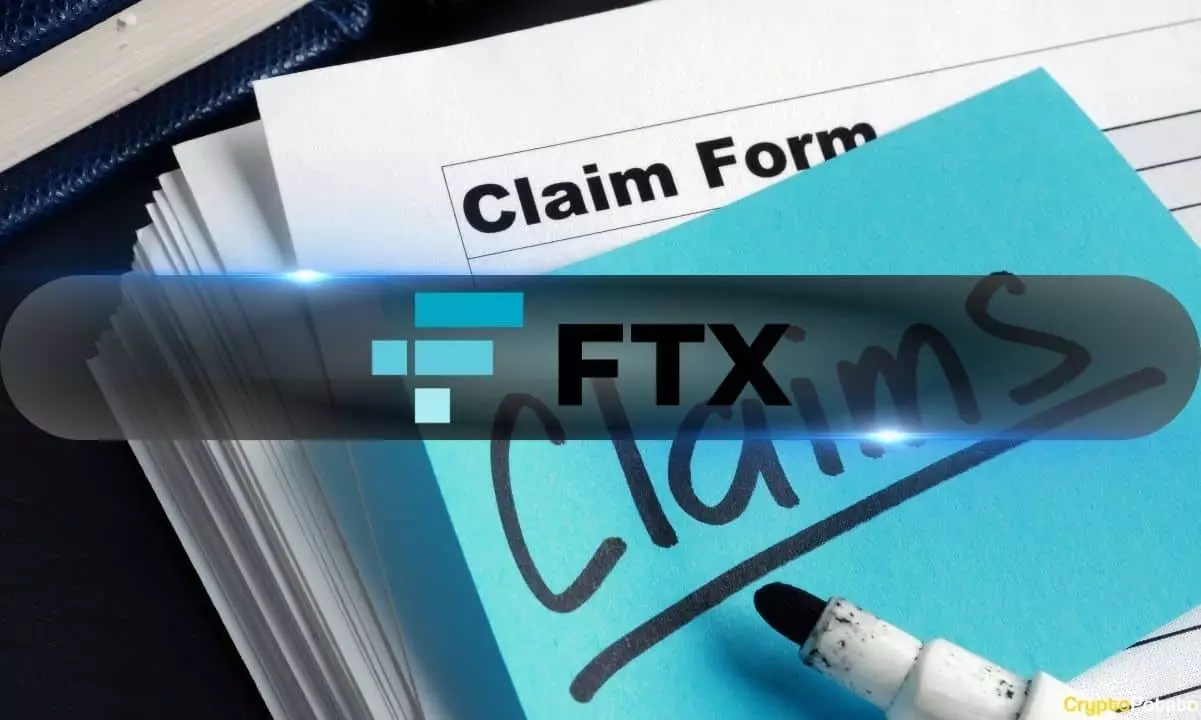The recent announcement from the FTX Recovery Trust regarding the distribution of over $5 billion to creditors marks a significant yet contentious chapter in the saga of the failed crypto exchange. Amidst the chaos of cryptocurrency’s volatility and the damaging fallout of mismanagement, the efforts to reimburse creditors are, undeniably, a step in the right direction. However, one cannot help but be skeptical of the recovery conditions and the methodology that the Trust has employed. The categorization of creditors into five “convenience classes,” though structured, raises questions about fairness and equity among classes and the broader implications for the crypto economy.
The Class Disparity: Disbursement Hierarchies in Question
The distribution of funds is not an equal opportunity initiative. Creditors in Class 5A stand to gain a substantial 72% return, whereas those classified as 5B will receive considerably less, at 54%. The disparities extend further, sparking discussions about the justness of such classifications. While one could argue that some creditors deserve variations in repayment based on the amount owed, the operational mechanics look more like a bureaucratic system that prioritizes certain individuals over others. This stratification seems to serve not just the logistics of returning funds, but also the interests of larger players, raising concerns about the inherent biases in this recovery plan.
It’s worth noting that the guaranteed payments—which range from 120% down to the dismal 54%—could be perceived as a commentary on how hierarchical dynamics play out in financial crises. Such setups only serve to highlight the perennial issue of wealth concentration within the finance sector. Banks and institutional investors, equipped with their lobbying power and resources, often come out on top, while smaller, individual investors are left to await uncertain futures.
Immediate Payouts vs. Long-term Consequences
FTX’s announcement has set an expedited timeline for payout distributions, with eligible creditors expected to see their funds within a handful of business days following the May 30 release. While rapid disbursements may offer immediate relief to distressed investors, this hurried process comes with drawbacks. Eligible creditors will have to get acquainted with new Distribution Service Providers like Bitgo or Kraken. This stipulation, mandating that they forfeit cash transactions from the bankrupt exchange, raises barriers for many investors, particularly those unfamiliar with navigating cryptocurrency platforms or who lack the digital savvy to quickly adapt.
Additionally, some commentators have raised concerns over the repayment model that is tied to crypto values at the time of FTX’s collapse. While it may seem reasonable to peg reimbursements to the prices as they stood during this dramatic drop, it paints a troubling picture for individual investors who find their assets permanently devalued in the repayment process. For many, the current market’s upswing might leave them feeling cheated by a system that does not reflect contemporary valuations.
The Legal Quagmire: A Transformative Approach to Reclamation
As FTX attempts to recover its financial footing, it has initiated legal proceedings against NFT Stars Limited and Delysium to reclaim allegedly withheld digital assets. This assertive legal stance is commendable, but it beckons a broader conversation about corporate responsibilities and ethical actions during bankruptcy. While pursuing funds that rightfully belong to creditors is vital, it’s difficult to ignore that such lawsuits may drag out the recovery process further, leaving many individuals hanging in the balance.
Reclaiming funds from other digital entities may feel like an administrative necessity, but it can also reflect a desperate last-ditch effort to bolster a sinking ship. For the average investor watching from the sidelines, these legal battles might seem futile, especially in a climate where these assets fluctuate wildly and the entire crypto landscape is under intense scrutiny.
The Broader Implications of FTX’s Crisis
This unprecedented distribution process reveals the fragility of trust in the crypto sector, which had aspired to create a decentralized financial landscape. The events surrounding FTX not only illustrate how mismanagement can threaten ecosystem stability but also highlight the ramifications for policy reform in the financial and regulatory frameworks. As the industry looks inward to examine what went wrong, regulators may inevitably ramp up oversight—something that could either hinder innovation or pave the way for a safer cryptocurrency environment.
FTX’s recovery efforts may serve as a harsh tutorial for the industry at large. If we are to emerge from this tumultuous era wiser, it will require introspection and a commitment to fostering trust and transparency at every level of financial engagement.

